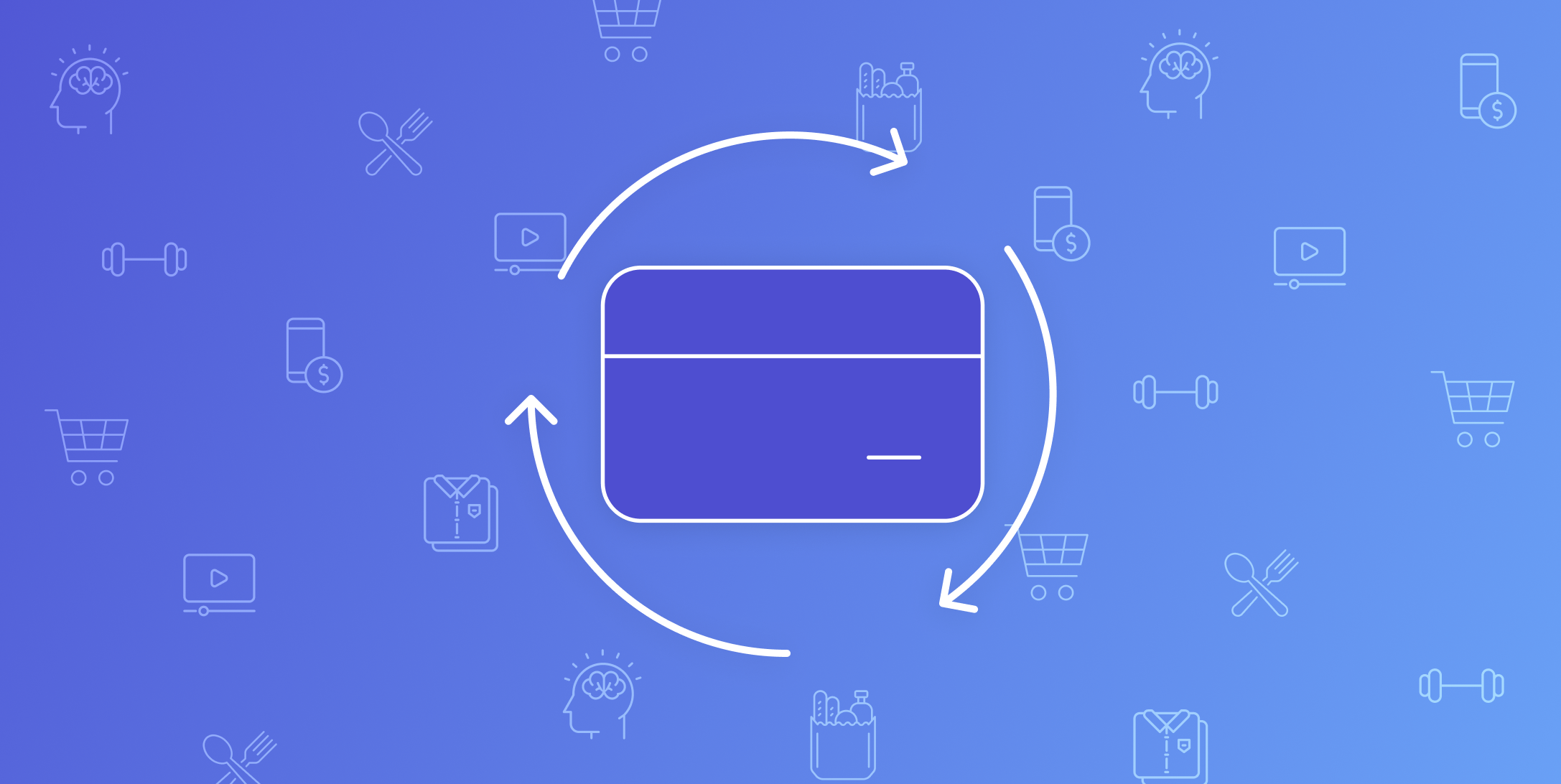The subscription services market has grown steadily for nearly a decade, but the popularity of subscriptions really spiked in the last two years as more and more housebound, health-conscious consumers saw the value in having entertainment, gaming, food, education, training, retail products and more delivered right to their homes.
But with this growing popularity also comes recurring billing — meaning more monthly fees to track and manage.
“More than 80 percent of consumers have at least one subscription”
Right now, more than 80 percent of consumers, or about 61 million people, have at least one subscription, which is up from 72 percent about a year ago. But, according to one leading budget app, that figure may be too low, saying their average user now has at least two to three subscriptions.
Subscription Services Surge
UBS predicts the “subscription economy” will continue to skyrocket. The financial services heavyweight estimates subscription services will more than double their current $650 billion value and achieve a $1.5 trillion market value by 2025. Needless to say, this is welcome news to subscription providers eager to capture upfront revenue and long-term customer relationships providing third parties with more data on consumer preferences.
“Believe it or not, subscriptions are where bill pay started. Bill pay in America started with gym memberships."
“We are shifting from a transactional economy to a relationship-driven one,” says Adam Levinter, author of The Subscription Boom. “A subscription is a recurring touchpoint with the customer. It’s that constant reminder that people have a relationship with the brand."
Subscriptions and Recurring Billing
Despite their soaring popularity, subscriptions are far from a new concept. As BillGO CEO, Dan Holt told PYMNTS last Summer. “Believe it or not, subscriptions are where bill pay started. Bill pay in America started with gym memberships. It was a subscription service that Pete Kight and Checkfree set up that turned into bill pay. And now we’re going full circle back into subscriptions.”
Indeed. For those who still recall paying the recurring fees accompanied morning newspapers or book-of-the-month club dues, subscriptions may not seem especially novel. What has changed is the rise of smartphones and nearly-instantaneous home delivery, which makes swiping and clicking for goods and services nearly effortless.
How Financial Institutions Can Capitalize on Recurring Billing
All this convenience has created an influx of new monthly charges consumers must track. According to one study, the average monthly spend on subscription services is $273, up from $237 in 2018 — a 15 percent increase of an additional $430 annually.
And while a $9.99 subscription charge may not be what most Americans think of when they hear the word “bill,” those recurring charges add up just like bills.
“For forward-thinking financial institutions (FIs), this represents an opportunity to offer customers a more secure method of managing subscriptions.”
“Quit thinking about subscription services as a separate merchant,” Holt told PYMNTS. “That is a bill that you pay on a recurring basis, whether it’s Hulu, Netflix, Spotify, Amazon Prime…that is part of bill pay.”
And, like bills, overlooked subscriptions can trigger late fees. In one study, 60 percent of respondents said they had missed paying at least one recurring monthly payment. And BillGO’s own research found 74 percent of consumers expressed concern about subscriptions being canceled or stopped due to issues with their credit or debit cards.
As the data in BillGO’s The Battle for Bill Pay eBook made clear: more than half of these consumers also had concerns the cards they used to pay for subscriptions were at risk of being compromised in a data breach. Yet, despite this fear, 52 percent of consumers used their debit or credit cards to pay for subscriptions.
All signs indicate the popularity of subscriptions will only grow. For forward-thinking financial institutions (FIs), this represents an opportunity to capitalize on by offering customers a more secure method of managing subscriptions.
Better Bill Pay Has Your Back
Read all about it! The Battle for Bill Pay, BillGO’s latest eBook, offers financial services executives up-to-date insights into what consumers want when managing not only their subscriptions but all of their bills. More importantly, the eBook outlines steps FIs can take to meet the needs of their customers.


